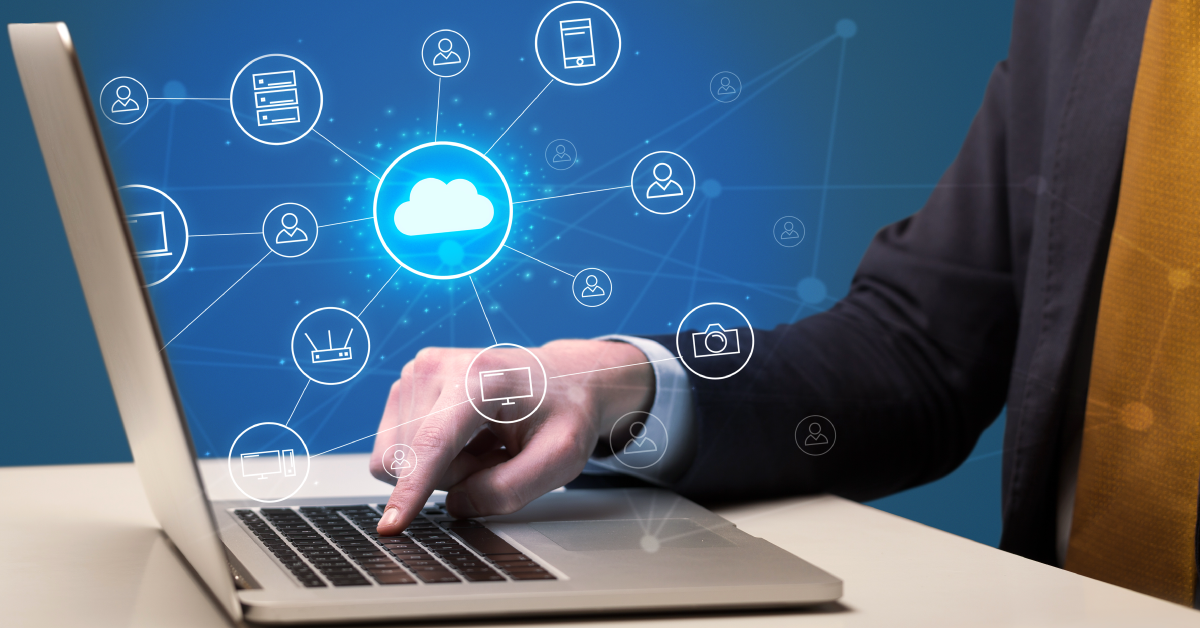When it comes to creating a compelling campaign, email marketing for SaaS remains a tried-and-true way to engage and convert potential customers. Beyond that, it’s also key to retaining existing clients by nurturing the relationship and ensuring they are getting the most value out of your SaaS product.
So, what are the best ways to take advantage of email marketing? The first step is to understand its capabilities.
Also, To read about our in-depth article that covers it all on digital marketing for SaaS, click here
1. What Is SaaS Email Marketing?
Email marketing for SaaS is a way to communicate with past, present and future customers. It can encompass the entire lifecycle of a customer, including onboarding and retention. At different stages, your company will probably wish to run campaigns to target specific areas – say, lead generation. However, this should always remain part of an overarching strategy to stay front-of-mind with your audience and avoid churn.
2. Benefits of Email Marketing for SaaS Business
B2B SaaS email marketing has many benefits, including increasing sales and fostering relationships through direct contact. One of its most valuable features is that you can deliver personalized content to customers at different stages of the sales funnel. Your communications will also yield data regarding open rates and click throughs, so you can optimize future contact. Once you have several standard templates for different types of interaction, you can easily automate your processes.
3. Different Types of Email Marketing
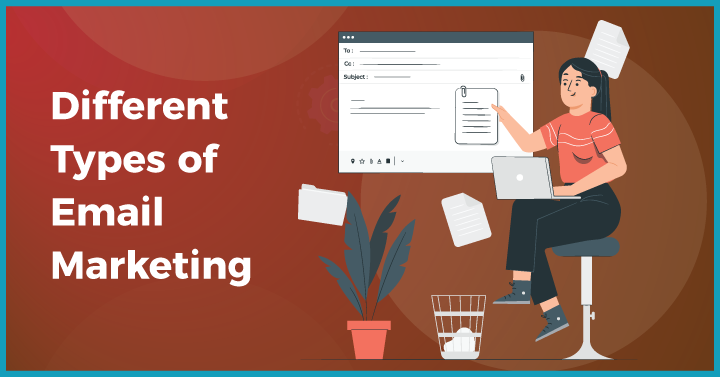
3.1 Welcome Emails
In SaaS circles, a welcome email can sometimes refer to the first communication with a client after they’ve purchased your product. Here, however, we’re talking about the first communication with a potential customer after you’ve obtained their email, perhaps through a free trial, webinar signup or white paper download.
A welcome email should outline the basic use cases for your SaaS and the challenges it aims to solve. Engaging graphics and clear language are essential, but there’s no need to go into too much detail at this point, as you’re principally hoping to whet the appetite of the individual rather than overload them with information.
In general, welcome emails tend to have higher open rates than other promotional emails, so it’s a good opportunity to set up your stand.
3.2 Email Newsletters
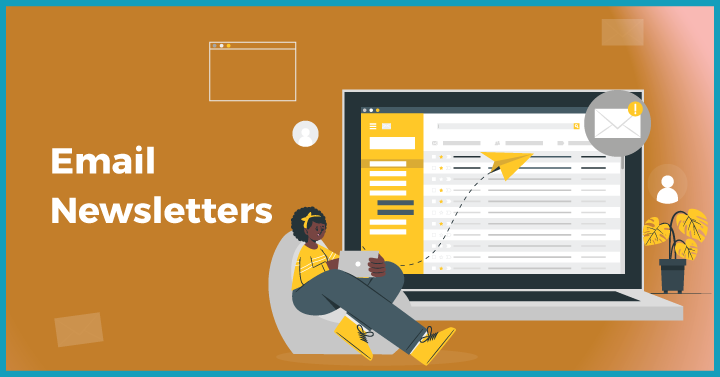
Email newsletters are a handy method of explaining what SaaS products are and how to use them. While the welcome email might deliver the basics, regular newsletters detail different capabilities of your offering, along with information about software updates and any new blogs on your website that might pique the interest of your audience.
Regular contact keeps your customer base aware of the advantages of purchasing your SaaS solution, while also highlighting the resources available on your site, whether that’s blogs on best practices or case studies of successful implementations of your product.
In fact, 69% of B2B marketers use newsletters to distribute content – more than any other medium excluding their own website blogs.
3.3 Dedicated Emails
One of the downsides to newsletters is that they dilute focus by featuring several items. Dedicated emails target just one promotion or piece of information.
This call to action can be useful for driving a particular objective, like encouraging people to explore some new functionality of your software. Since there is just a single message, click throughs and ROI can be easily distilled.
Asana, for example, used dedicated email marketing to promote a virtual event, showcasing their product development.
3.4 Lead Nurturing Emails
Rather than a single send out, the best SaaS email marketing strategy involves a chain of carefully constructed emails designed to go from welcome to sale.
Through data analytics and user behavior research, you might have found that most customers need a sequence of three or four emails that take them through your SaaS product in easily digestible chunks before they are ready to buy. This can all be automated for greater convenience.
Lead nurturing can combine educational emails that help readers address challenges as well as success stories. Mailchimp, for example, explained how it increased clickthrough rates by 525% in its lead-nurturing email.
3.5 Sponsorship Emails
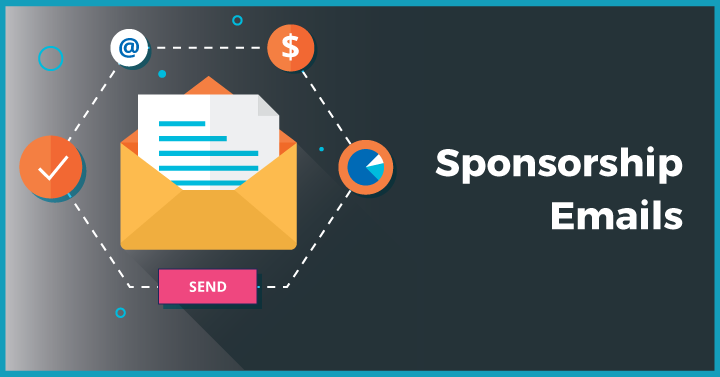
If you are concerned your email database isn’t yet robust enough to reach a wide enough audience, you can always opt for sponsored emails, which are sent through a partner to your target end user. These can be either part of the third-party company’s newsletter or a dedicated email about your business sent via their brand.
There are some obvious challenges with this approach: you haven’t earned the subscribers yourself, so they will be less likely to engage; it can be complex navigating the requirements of your partner, both in terms of the kind of copy they will allow and the dimensions of images/text.
On the plus side, it means you can approach people who you wouldn’t otherwise have been able to access – and often at cheaper prices than traditional paid ads, as Paved explains here. Just make sure you choose a partner with the right audience for your SaaS product.
3.6 Transactional Emails
Transactional emails are one-to-one communications between you and a customer. Generally, they are designed for things like signup confirmations, password resets and account notifications.
Their utility in email marketing for SaaS solutions is primarily triggered by somebody reaching the end of their trial, at which point a transactional email might be sent to encourage a full purchase.
As email automation business Messaged points out, they can be used as an effective call to action when bolstered by the clear benefits of upgrading to a paid license.
3.7 Re-Engagement Emails
There might be some individuals who have not unsubscribed from your mailing list but have not engaged with your emails for some time. If so, it’s time to give them a little push, either through some must-have content or a survey asking for feedback.
Keeping people engaged with your product is essential throughout the customer lifecycle, and while your prompt risks causing some people to unsubscribe, there’s also no point in throwing money away sending emails to somebody who doesn’t wish to read them – or may even have left a company.
Conversion specialists Invesp estimate its five times more expensive to acquire a new customer than it is to re-engage an existing one, so it’s worth taking the time to create a unique template to reach out to dormant subscribers.
3.8 Brand Story Emails
While emotionally engaging buyers might seem more appropriate for the B2C marketplace, at the end of the day the people who make purchasing decisions also want to feel connected to a SaaS product, which is where brand story emails come in.
They may not be as important as functionality and user friendliness when it comes to selling software, but brand stories are an opportunity to try and engage customers with your values as well as to tout your growth and market reach.
Microsoft has even created a whole platform to share more human stories, each of which could easily be edited into an email and sent to subscribers.
3.9 Video Emails
There are many ways to successfully incorporate video into your email marketing for SaaS, from providing tutorials to sharing brand stories.
Cost and complexity can both be issues when creating video content for emails, but scaling those barriers can be worth it to explain product usage more succinctly or to attract customers who prefer visual interactions over text.
Plus, click through rates through video can be more than 20% higher than through images, as demonstrated by video marketing platform Wistia.
3.10 Review Request Emails
Put your existing customer base to work for you by sending out review request emails. Encourage them to provide feedback of your SaaS solution on sites like Capterra and G2.
If your users are satisfied with your SaaS solution, you’ll want to make sure other potential leads know it, as peer reviews build credibility. You can use analytics to segment customers by experience, to ensure your review request emails go to the people who use your service the most – and, of course, are pleased with its efficacy.
You don’t need to spend a lot of time writing an essay, just keep it short and sweet, as these companies did.
4. 20 Tips for Email Marketing for SaaS
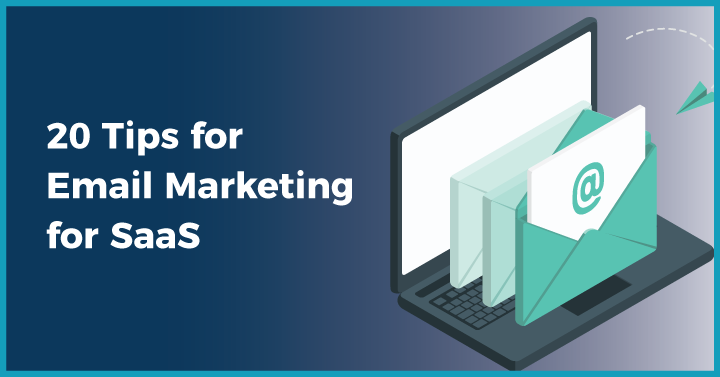
4.1 Activate Behavioral Triggers
Behavioral-triggered emails can be set up to send automatically when a consumer engages in a particular activity. This could be a welcome message when they sign up to a newsletter, an onboarding introduction when they purchase your software or a communication based upon pages they’ve been viewing on your site.
Worthwhile behavioral triggers will be specific to your company, but the results are undeniable: marketing software Wunderkind generated 24 times as much revenue with this strategy compared to bulk emailing.
4.2 Reach New Audience with Referrals
As with review request emails, referrals put your existing customer base to work for you. It’s a good way to grow your audience and build brand loyalty, while ultimately costing you less than paid marketing.
Zoho, for instance, runs an affiliate program that rewards people that recommend their software suite with commissions.
4.3 Use NPS Survey to Analyze Brand Value
Net promoter score (NPS) surveys are a common metric to measure customer experience. Sending out questionnaires can help you determine where your strengths and weaknesses as a brand are generally, continuing to engage existing users while also allowing you to segment those individuals who are positive about the product for, say, review request emails or referrals.
Research has shown that high NPS is correlated with customer loyalty, and that on average people who provide a strong NPS recommend a company to an average of 3.5 people, so it’s a worthwhile metric to monitor via email marketing.
4.4 Improve Customer Onboarding Experience
When it comes to SaaS, the sale is only one part of the email marketing journey. Once you’ve signed up a new company, you need to ensure they have the smoothest, most seamless onboarding experience possible, which can be easily achieved with a well-planned, well-tested, well-executed sequence of emails.
HubSpot has a good example of how you can segment the onboarding experience by user engagement following signup, with key feature demos for those that are active and value proposition reaffirmations for those who are inactive.
4.5 Respond to Every Customer Email for New Engagement
If you have acquired someone’s email address, whether through content downloads or free trials, it’s worth including them in your lead-nurturing strategy. While some individuals might not seem like natural customers for your SaaS product, it’s rarely possible to gather enough data on a person to discount them entirely as a prospect.
4.6 Create Processes to Learn from Each Email
This is a fairly obvious point in our data-driven world, but make sure you actually have the processing power in place to analyze how your emails are performing, whether that’s for newsletters or transaction communications. This will allow you to optimize your user journeys across the board.
There are a number of tools that can help you automate and analyze email marketing campaigns, including Salesforce and Campaigner.
4.7 Deliver Relevant and Appealing Email Content
Just as with your website, your email marketing for SaaS needs to contain targeted content that has been engineered to appeal to your audience. This could be client success stories, use cases, how-to guides – anything relevant that will educate and enable your customers to better utilize and appreciate your software.
4.8 Use Power Words to Garner Attention
Power words evoke psychological or emotional responses from readers. They can be particularly useful in email subject lines, where you want to instantly grab attention, in order to boost open rates. Some examples appropriate for B2B marketing include easy, ultimate and success.
These can be broken down into categories that arouse curiosity, create anticipation or suggest trustworthiness, as demonstrated here by Wisepops.
4.9 Creatively Use Variations and Avoid Repetition
As with all marketing strategies, you should be constantly tracking the success of your email marketing using the most appropriate metric, whether that’s clickthroughs or conversions. By using variations in subject lines, content and even segmentation of subscribers, you can optimize your success rate.
You can also engage in what’s known as A/B testing, where you send one version of an email to one set of customers and another version of an email to a second set of customers, to see which one performs better. In a consumer context, Buzzfeed does this with its newsletters to see which subject lines lead to higher open rates.
4.10 Strategically Put Features vs. Benefits
Speaking of A/B testing, this can also be useful to see whether highlighting features (i.e., software functionality) or benefits (i.e., how the functionality helps a buyer) is more profitable for your strategy.
Sometimes the choice between benefits and features marketing will vary depending on the stage in the lifecycle of a customer, so once again segmentation can be useful. Someone just beginning to use Slack, for example, will probably want to know how it can help them – in other words, benefits. A long-time subscriber, meanwhile, may be keener on feature updates.
4.11 Don’t Overlook Micro Conversions
Think of micro conversions as smaller steps that lead to the principal goal. While all your email marketing should eventually lead to a sale (or, for existing clients, retention), open rates and clickthrough rates are shorter-term objectives that can help you get there, as you build rapport with your audience.
Web-based Gantt chart tool Tom’s Planner, for example, put more effort into promoting free trials on its website. The increased micro conversions eventually translated into more purchases.
4.12 Go for Basic Automation or Drip Campaign Emails
Drip campaigns are an almost completely automated approach, activated after a particular action is performed, such as signup to a trial or even the full service. A sequence of emails is sent at set times, in order to increase user engagement.
These standardized streams don’t necessarily allow for much customization but are less resource intensive once launched. Netflix, for instance, uses a drip format to encourage people who leave the service to rejoin.
4.13 Send Targeted Emails to Customers When They Are Ready
An alternative to drip automation is dynamic automation. This involves sending targeted emails to customers after they have performed certain actions. Think of it as cause and effect, maintained over successive email communications.
To take the Netflix example again, they also use dynamic email marketing that is triggered based on what their users watch.
4.14 Personalize Your Emails for Better Connection
At its most basic, personalization can mean addressing an email to a named individual – most email platforms will allow you to do this today. It can also go a bit deeper, including personalized content and personalized offers.
Personalized subject lines, for instance, have been shown to increase open rates by 26%.
4.15 Create Lead-Nurturing Funnel Campaigns
We mentioned the SaaS sales funnel right at the beginning of this article. Your overarching email strategy should take people from awareness of your offering, through the comparison and consideration stage, down to conversion.
From there, funnel campaigns focus on building brand loyalty and, ideally, encouraging advocacy through referrals and reviews.
4.16 Start with Free Trials and Demos to Convert into Paid Customers
Free trials and demos are a great way to showcase the advantages of your solution. Once you are gathering data on how a customer utilizes your product, you can be much more surgical with your email marketing, emphasizing relevant features and pinpointing how they add value.
Users can then be upsold using this analysis. For instance, if a free Slack user seems to be spending a lot of time on routine processes, Slack might decide to email them highlighting that its paid versions come with workflow automation.
4.17 Send Informative and Value Creating Emails to Retain Customers
We’ve already talked a lot about customer retention, but considering how important it is for SaaS businesses, it deserves its own point. Once you’ve converted a prospect, you can keep them keen with emails that detail features they’re not taking advantage of or updates that improve your service.
You can also monitor satisfaction through NPS, as discussed earlier in this article, to see what aspects a user is not pleased with.
4.18 Upgrade Customer Experience for Better Engagement
Guides, tutorials and case studies can all help your customers engage better with your SaaS solution.
Some other ways to avoid churn include email interactions that improve onboarding and counteract red flags like infrequent logins.
4.19 Celebrate Your Customer’s Important Events
Related to personalization, you can help customers celebrate events like milestones of using your software or even birthdays by giving them some kind of short-term product discount or a free piece of value-added content.
Userpilot research registered a whopping 23% increase year on year in B2B SaaS companies using personalization and celebrating customer milestones.
4.20 Avoid Over-Sending Emails to Customers
Our parting tip could easily have been our first tip: don’t spam your customers. With your mind racing from all the different approaches and ideas you could incorporate into an email marketing for SaaS campaign, it’s important to keep an eye on the cumulative number of emails your audience is receiving.
After all, keeping people engaged is not the same as inundating them with information. In general, companies send out email marketing once a week or several times a month, rather than daily. This varies by industry. For SaaS, it’s usually better to stick to no more than biweekly, though you can vary this and track open rates and unsubscribes to see what works best for your business.
5. Some Email Marketing for SaaS Examples
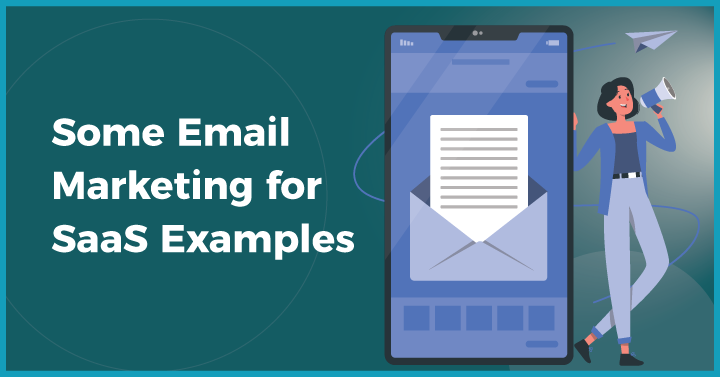
5.1 Chanty
Team communication and collaboration software Chanty has put together a re-engagement email that targets people who have been inactive on the service. The email takes time to detail the benefits of Chanty, before including a call-to-action button at the bottom of the page.
This strategy demonstrates a way to use automation to draw in customers who are at risk of churn, using user segmentation to target a particular subscriber group (i.e., low-frequency users).
5.2 Zapier
Zapier sends out regular monthly notifications regarding product updates and fresh integrations available with its software. By doing so, they simultaneously demonstrate how they already add value and how they are constantly upgrading the customer experience.
This alternative form of newsletter highlights features as opposed to benefits, keeping descriptions short and practical, while leaving more enticing readers to click for more details.
6. What Is the Best Strategy for SaaS Email Marketing?
Generally, the best approach is to plot out how different user journeys might look, preparing flows for various personas. Ultimately, very few people buy a SaaS service right off the bat, so you should be prepared for a sequence of communications before conversion, not to mention continuous engagement with newsletters and dedicated emails after.
7. How to Create a Marketing Strategy for SaaS?
How you create a marketing strategy for SaaS will ultimately come down to what you want to achieve. What remains universally true, however, is that a combination of SEO, paid ads and email marketing will produce solid results.
About Us
Growth Ganik is a rapidly evolving digital marketing agency in Sydney, Australia that specializes in SEO, content marketing, marketing strategy and lead generation.
We work with clients from leading brands and industries such as B2B SaaS, nonprofits and more to develop profitable digital marketing solutions that are data-driven to support all kinds of business goals from widening user bases, gaining more traction for online engagement, to increasing conversion and helping businesses scale up.
For creative tailor-made digital solutions and sustainable growth insights, get in touch with us!








